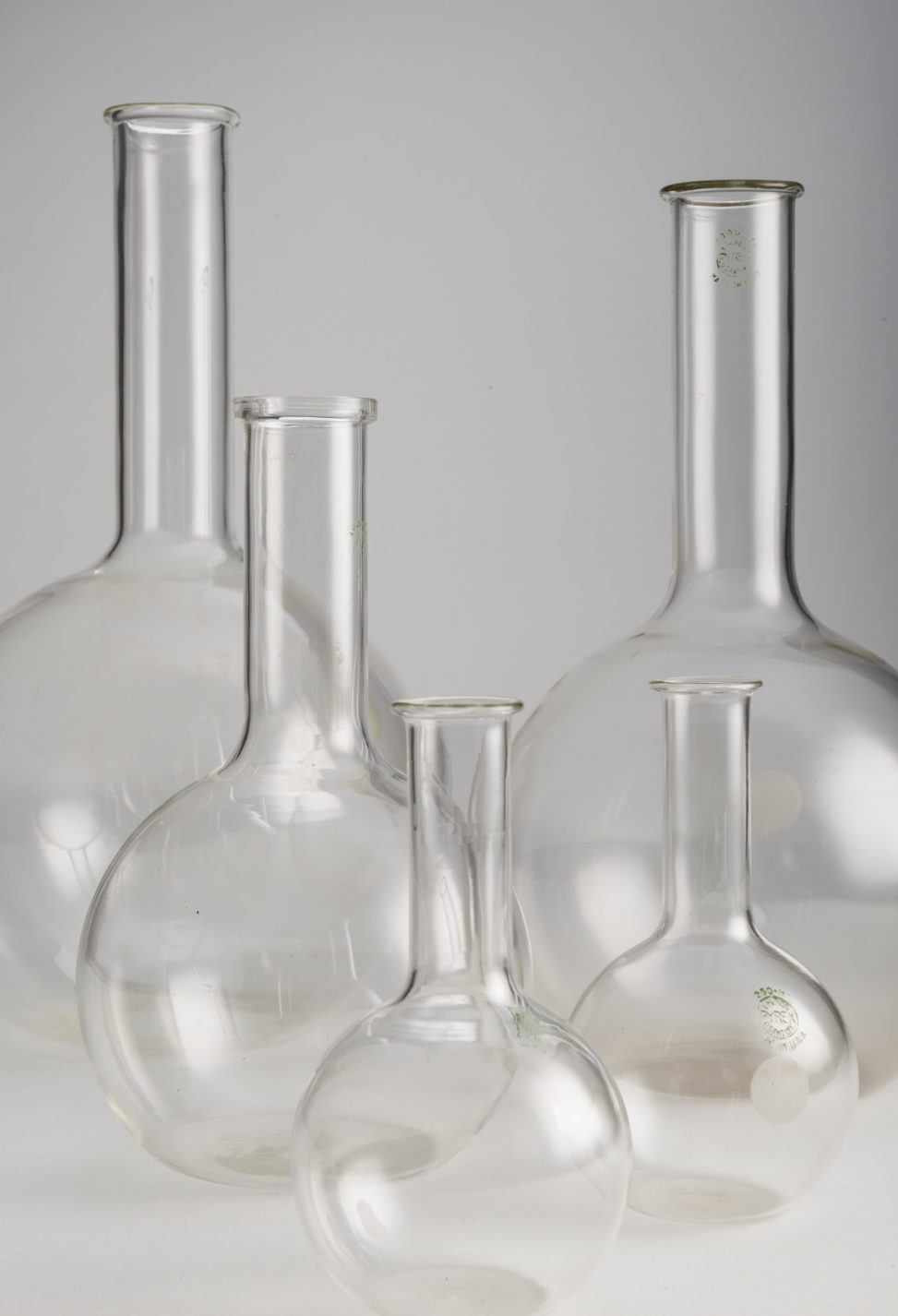
Boiling Flasks
- Designed by
- Unknown
- Material
- Borosilicate glass
- Produced by
- Corning Glass Works, Corning, New York
- Dimensions
- 3000 mL: 33.5 x 19.5 x 19.5cm
Some of the properties that made these flasks ideal for laboratory use also made them well-suited for domestic use in serving water or wine. The flattened bottom and concentration of weight in the lower portion created stability, the long slender neck provided secure grip for pouring, and the transparency offered easy view of the contents.
They came in broad range of sizes—those shown here range from 250 mL to 3 L—some more useful in a lab than at home. The material, borosilicate glass, was invented in Germany in the 19th century and combined silica and boron to create laboratory ware that was resistant to extreme heat. Modern designs for glass pitchers and decanters became available in the years following the Machine Art exhibition, making domestic use of the lab glass unnecessary.
The Liliane and David M. Stewart Program for Modern Design, 2013.10.1–3




